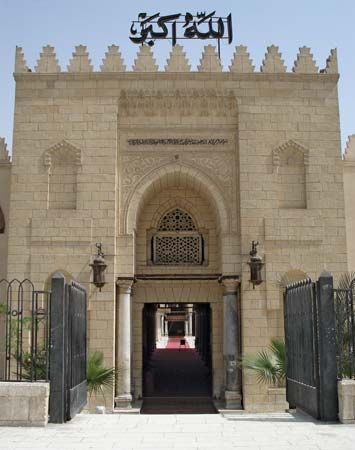ʿAmr ibn al-ʿĀṣ
- Title / Office:
- governor (661-663), Egypt
ʿAmr ibn al-ʿĀṣ (died 663, Al-Fusṭāṭ, Egypt) was the Arab conqueror of Egypt.
A wealthy member of the Banū Sahm clan of the important tribe of Quraysh, ʿAmr accepted Islām in 629–630. Sent to Oman, in southeastern Arabia, by the Prophet Muḥammad, he successfully completed his first mission by converting its rulers to Islām. As the leader of one of the three military forces sent to Palestine by the caliph Abū Bakr, he took part in the battles of Ajnādayn (634) and the Yarmūk River (636) and was responsible for the Muslim conquest of southwestern Palestine. He achieved lasting fame, however, for his conquest of Egypt—a campaign that, according to some sources, he undertook on his own initiative. After defeating large Byzantine forces at Heliopolis (now a suburb of Cairo) in 640 and Babylon (a Byzantine town on the site of the present Old Cairo) in 641, he entered the capital, Alexandria, in 642.
A successful general, ʿAmr was also a capable government administrator and an astute politician. In Egypt he organized the system of taxation and the administration of justice and founded the garrison city of Al-Fusṭāṭ adjacent to Babylon, where he built a mosque (still standing) bearing his name. At the Battle of Ṣiffīn (657), fought to decide the succession to the caliphate, he sided with Muʿāwiyah I, governor of Syria, against ʿAlī, the fourth caliph of Islām. In the ensuing arbitration, he faithfully represented Muʿāwiyah, who rewarded him with the governorship of Egypt at the advent of the Umayyad caliphate (named for the Banū Umayyah clan of Muʿāwiyah) in 661.













